Maximize your AdSense RPM with these 21 essential tips for publishers. Improve ad placement, target high-paying keywords, optimize page speed, and more. Boost your revenue potential today!
AdSense RPM is one of the key performance metrics that publishers often strive to optimize. Here, a major difficulty publishers face is the fluctuating nature of RPM as a metric. One day, it might shoot sky-high, and the other day, it might fall to the ground.
Whatever the case, one thing is certain: More and more publishers are monetizing their content with Google AdSense, and the competition will be fierce. In fact, by 2027, digital advertising spending will reach a whopping $870.85 billion US dollars globally, and Google will own 89.98% of it.
When it comes to the AdSense RPM, it is difficult to predict any trend. That’s why, most Google AdSense publishers end up asking, “How to increase AdSense RPM?”
In addition to this, a lot of publishers tend to confuse RPM with CPM, thereby complicating things.
Before moving on to tips about increasing AdSense RPM, let’s talk about what RPM is and how it is different from CPM.
What is Adsense RPM?
Adsense RPM is a key metric exclusive to Google Adsense. It is designed to gauge the estimated earnings a publisher can generate for every 1,000 ad impressions. This indicator allows publishers to grasp the average revenue earned per thousand views, offering a valuable tool to evaluate the effectiveness of their Adsense monetization strategy.
Why is it Important?
Adsense RPM serves as a vital indicator of how effectively a website monetizes its traffic.
It provides publishers with actionable data to refine their monetization strategy. By analyzing RPM data, publishers can identify the types of content that attract targeted traffic, and higher-paying ads to adjust their content strategy accordingly.
How is Adsense RPM Calculated?
AdSense RPM is determined by dividing your estimated earnings by the number of page views you received and then multiplying the result by 1000. The formula for calculating AdSense RPM is straightforward:
Here’s how you can calculate Adsense RPM:
AdSense RPM = (Estimated Earnings / Number of Page Views) * 1000
Suppose your website has estimated earnings of $1500 and receives 200,000 page views.
In this case, the AdSense RPM would be ($1500 / 200,000) * 1000. The RPM in this scenario would be $7.50.
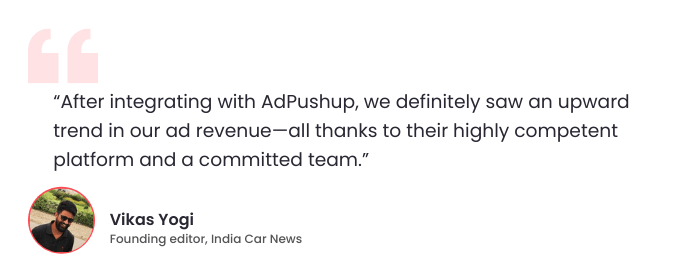
What Is Page RPM vs CPM?
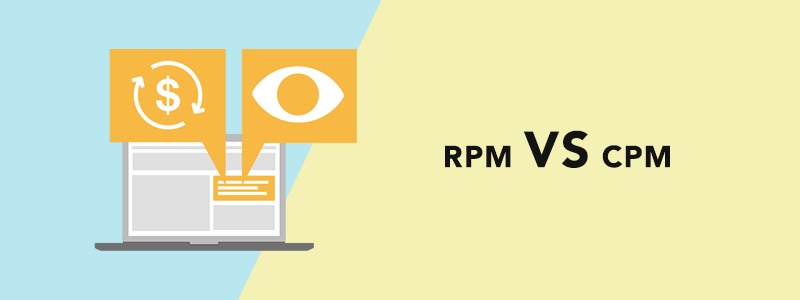
As stated above, RPM is the estimated revenue you will earn by the number of views on your website’s page. CPM (cost per thousand impressions), on the other hand, is the cost the advertiser pays for 1000 impressions.
Basically, CPM is an advertiser/marketer-centric metric that is often misconstrued for web publishers. RPM is meant to give publishers a sense of direction on how much they can earn with the received value for ad impressions.
The following examples will give you a better understanding of the difference between these two metrics.
Let’s say your estimated revenue is $1,000 for 10,00,000 page views. Hence, your should RPM should look like this:
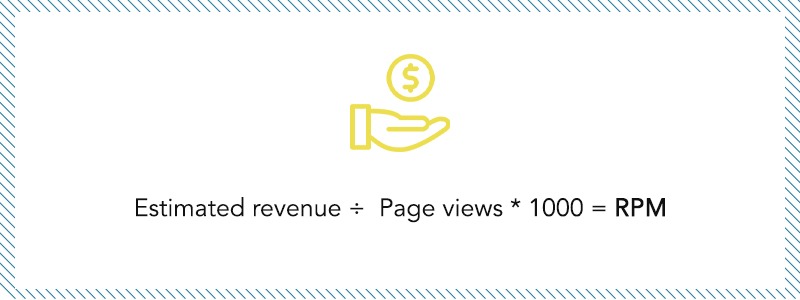
→ 1,000 / 10,00,000 * 1000 = $1 RPM
Now, let’s say the advertiser’s campaign budget is $500 and you received 5,00,000 ad impressions. Hence, their CPM should look like:
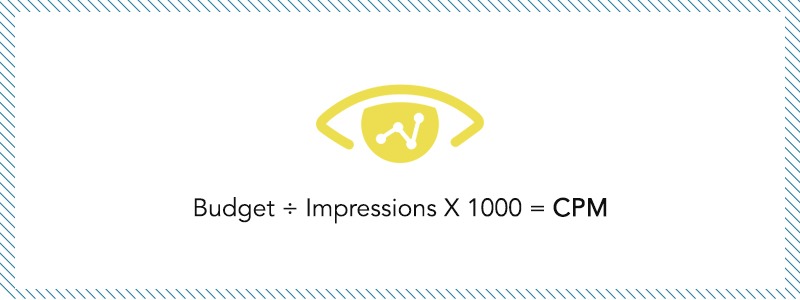
→ 500 / 5,00,000 * 1000 = $1 CPM
Now, let’s get back to the heart of the matter and delve into how to increase your Google Adsense RPM.
21 Quick Tips To Increase AdSense RPM
As you go through the list, you will notice that all points are interdependent, and we advise you to consider all of them to get better results.
1. Increase Targeted Traffic
Attracting high-intent, well-targeted traffic is the key to getting started with the AdSense RPM gamut. For this, you should focus on creating content around keywords with high search volume and traffic potential. A high amount of relevant traffic will lead to maintaining best-value CPMs, which, in turn, will result in higher RPM.
2. Strengthen your SEO
SEO caters to search as per intent. Therefore, to increase relevant traffic, SEO should be your top priority. You can get quality users to your website via search, and SEO proficiency helps you achieve that.
Work on all the aspects of your website SEO, such as user experience, site speed, and more. Working on website speed alone can bring fruitful results as it helps reduce the bounce rate. Consequently, your website will appear on the top pages of the search engine, which will lead to more traffic, and that means more ad visibility.
In fact, studies have shown that websites that load in one second have increased their conversion rate by 39%. To reduce the page load time, you can compress images and clean up unnecessary scripts or code.
It is important to note, however, that optimizing page load speed is just one aspect of a comprehensive SEO strategy. There’s a lot more to do, so make sure you don’t miss out on your website’s SEO strategy.
3. Improve Content Quality Score
The next step after you have visitors on your website is to make them stay. Make sure your content does not repel your visitors. Create high-quality content that’s relevant to your niche to keep users on your website longer, increasing their ad exposure. Moreover, you can also target niche topics that attract high-paying advertisers.
At the same time, you can incorporate multimedia in your content, like videos, infographics, and interactive elements to engage visitors. This will increase the scroll depth of your webpage, thereby increasing the chances of ads being clicked.
Lastly, navigate through your own site as a user and ask yourself if your content does 100% justice to the search context.
4. Bet on Real-value CPC Keywords
After organic, you have to put efforts in paid methods. Find high-paying CPC keywords that are also in sync with the content you publish on your website. Tools like Keyword Planner, Ahrefs, and SEMrush help you discover the right keywords.
Moreover, keep a track of your competitors as well. Analyze the keywords they are targeting and see whether they suit your content or not. You can also narrow down your niche and select keywords that have high CPC and less traffic.
5. Use Section Targeting
Since you’re leveraging content and relevancy, using the “section targeting” an AdSense feature, can help increase the relevancy of your ads by showing more contextual and content-focused ads to users.
You can include additional content on your website about particular topics to help AdSense in determining which relevant ads to display. This can include sentences or paragraphs. However, it can take a week or two for the changes to come into effect.
6. Use Geotargeting
When you have a strong hold over contextual ads, narrowing down the targeting as per geography may yield even better results. For example, if you know that the US region brings you the most relevant traffic, consider narrowing your targeting for this location to leverage better ad impressions.
Moreover, you can geotarget other countries like Canada, Australia, or even the Middle East, as they tend to generate high-paying ads.
7. Use Category Blocking
Ad relevance and revenue go hand in hand. While displaying just any ad may generate a high number of impressions, if it results in very low CPC or CPM rates, consider using the blocking controls in your AdSense account to pause that ad category.
Moreover, gathering the list and chucking out the non-performing advertisers (the ones with very low CPC) can actually be an addition to your overall ad yield. Furthermore, you can also block your competitors from showing their ads on your website.
You can also use the AdSense Ad Review Center to monitor which ads appear on your site and block any that perform poorly.
8. Excel your User Experience
Your website’s primary purpose is to serve ads. But your visitors’ key focus area is the content. So it’s obvious to place ads in a way that they don’t hamper visitors’ reading experience. Again, navigate through your own site, or ask your colleague for feedback. Next, ask if you’re doing 100% justice to the user experience. Also, user experience can be a great way to enhance your SEO.
9. Optimize Ad Formats
The ad formats you choose to show, the spot where you place them, their proximity to the content, the appearance of ads, and the number of ads you show are all important aspects to consider. All these factors help visitors comprehend how much they want to engage with your website. The higher the time on-site, the better the CPMs will be.
Moreover, you can experiment with certain ad sizes, such as 336×280 (large rectangle) or 300×600 (large skyscraper), as they tend to perform better in terms of click-through rates (CTR).
You can also strategize on serving both text and display ads simultaneously within the same webpage. Planning their placements meticulously will not only give you a creative edge, but also increase AdSense RPM.
Furthermore, you can also enable Google’s Auto Ads. It employs advanced machine learning to optimize ad formats and their placements automatically for better results.
Another way to optimize ad placements is via responsive display ads. You can deploy responsive ad units on your website to start with it. These ads automatically fit in the available ad space by adjusting their size, appearance, and format. This ensures visibility across devices. Other than this, rich media ads are also worth considering.
10. Start Header Bidding
Header bidding is an improved alternative to the traditional publisher waterfall technique, where each ad request is passed on from one ad network to another for fill rates, and on and on. Header bidding, intensifies competition for your ad inventory and maintains high CPMs by enabling you to reach numerous demand partners simultaneously.
11. Increase CTR (Click-through Rate)
Increasing CTR will automatically have a positive effect on your RPM. To achieve this, you can customize your ad styles. For example, you can employ ad colors that gel or complement your website’s color to make them less intrusive yet still noticeable.
You can also consider employing native ads. Their click-through rate (CTR) can be up to eight times higher than that of conventional display ads. This arises from the fact that customers view these ads as more reliable and engaging.
Placing ads within the flow of the article, especially in well-spaced content, also attracts more clicks.
12. Try AdSense YouTube
These days, videos and video ads are on the roll. Hence, if you’re a video publisher, don’t forget you can always leverage the YouTube platform to make efficient use of video ads, depending on your traffic and audience type. Other than this, rich media ads are also worth considering.
13. Fix all the Broken Links
If your Webmaster tool shows you have broken links, fix them immediately. Broken links have a gradual impact on SEO, which can eventually affect your traffic. The effect may go unnoticed, but you should ideally take care of broken links as soon as possible. A lot of broken link checker tools can help you detect external links that you can remove.
14. Rework on your Site’s Crawling Structure
Apart from broken links, the webmaster tool also allows you to analyze and restructure the crawling method of your website. As it is a free tool from Google, many publishers are already utilizing it.
15. Improve Ad Placement
There are two ways you can improve ad placement: placing ads above the fold and within the content.
Placing ads above the fold will make them more visible to the users when they land on your website. However, you should not place too many ads there as it can be seen as disruptive to the user. For mobiles, no more than 50% of the ad viewable should be above the fold. While for desktops, make sure the ads don’t cover more than 30% of the screen.
The second one is placing ads within the content. Ads between the content are more likely to be seen as visitors read through. To increase ad viewability, you can embed ads around engaging sections such as the introduction or between paragraphs. But high ad frequency can take you overboard and ruin the user experience as well. So, make sure to place an ideal number of ads on your website.
16. Implement Ad Refresh
Ad refresh allows you to show the same user more than one ad in the same ad slot. When a certain condition is satisfied, which could be the visitor’s time on the page or an action they perform, the current ad gets replaced with a new one. Make sure to refresh only those ad units that are in the user’s current view. With those impressions, your page RPM will go up even though the CPM will be lower than for the initial ad served.
17. A/B Test Ad Settings
One of the crucial points to increase AdSense RPM is to A/B test your ad settings. You can start by experimenting with ad density. Test how many ads per page work best for your audience. But remember that too many ads can hurt user experience, while too few may limit your revenue potential.
You can also use AdSense heatmaps to identify where users are spending most of their time on your pages and optimize ad placement accordingly.
A/B testing with the ad formats, placement, or other factors takes time to show the desired effect. You at least need to wait for a week before checking if the changes are performing better. If not, you can always reverse the action. However, for positive results, you should make sure that you never stop experimenting with different factors.
18. Diversify your Networks
The percentage of ad units filled with ads is known as the fill rate. A high fill rate increases page RPM, although 100% is impossible because of factors like network problems or visitors quitting the page before the ads load.
Depending on just one provider will make it difficult for you to achieve a high fill rate. To mitigate this, you can work with an ad server that allows you to work with multiple ad suppliers (ad networks, ad exchanges, etc).
You can first serve your direct campaigns to serve the most profitable ads in the premium slots. Then, fill out the rest of your ad slots via different ad networks. This will not only guarantee profitable placements but will also increase the fill rate.
19. Optimize Website for Mobile Devices
Between 2024 and 2029, it is predicted that the number of smartphone users worldwide will increase to 6.2 billion, showing a steady growth of 37.08%. The numbers make it clear: optimizing your website and mobile ads is paramount for RPM optimization.
There are a few specs that you can tweak for mobile optimization. Firstly, ensure your website uses responsive design for a seamless experience across devices. Simplify the menu and interface for easy mobile navigation. Lastly, ads should be placed strategically to capture attention without disrupting content, as unseen ads on mobile mean missed revenue.
20. Keep Looking, Tracking, and Analyzing
For all the efforts you may make一be it related to SEO, content, ad formats, ad placement, or ad buying methods, don’t forget that you have to keep tracking everything you are doing. Leaving out even a single activity will provide you with inaccurate knowledge and hamper your understanding of what worked and what didn’t.
21. Fix Technical Issues to Keep all Things Running
Lastly, you need to fix all the technical errors. You may be working on SEO and content, and all other things consistently. Though in the end, there shouldn’t be loose technical ends that invalidate all your efforts. The most common technical aspects include page/ad load time fixes and mobile friendliness.
How Much Adsense RPM is Considered Good?
When it comes to gauging the quality of Adsense RPM (Revenue Per Mille), plenty of factors are taken into consideration. This is a question that often engenders diverse opinions and multifaceted perspectives. The concept of a “good” Adsense RPM is contingent upon several key factors, including niche, website traffic, ad placement, and overall monetization strategy. Here are are a few factors that impact RPM:
Website Traffic
It is also important to evaluate Adsense RPM within the context of website traffic. Higher traffic volumes accompanied by compelling content and engaged users usually generate improved RPM figures.
On the other hand, websites with niche-specific and targeted traffic often experience more favorable RPM rates than those with broad, generalized traffic.
That said, let’s have a look at how placements of ads can affect your Adsense RPM
Ad Placement
Another pivotal aspect to consider is ad placement. Skillfully integrating ads in strategic locations throughout your website can significantly impact your Adsense RPM. Placements of ads that naturally blend with the content while maintaining user experience can enhance click-through rates and boost overall revenue.
Role of Monetization Strategy
Furthermore, the effectiveness of your overall monetization strategy also plays an important role in determining a satisfactory Adsense RPM. Employing diverse revenue streams, such as affiliate marketing or sponsored content, in conjunction with Adsense can contribute to higher overall earnings.
Now talking just about the numbers:
- At a low end, Google Adsense RPM can range anywhere between $2 to $5.
- At a medium end, Adsense RPM can range somewhere between $5 to $10.
- Lastly, on the higher end, Adsense RPM can go up to $50+.
However, that’s totally dependent on the type of niche. According to SEMrush, the best niches in the US for Adsense are insurance, online education, marketing, and advertising, and the list goes on. Here’s the list for your reference.

What influences AdSense RPM?
Following all the best practices to increase AdSense RPM is the best thing. But what are the factors that affect your AdSense RPM, both in a positive and negative way?
There are two metrics that influence page RPM.
CTR (Click Through Rate)
CTR is an advertiser/marketer metric used to calculate the percentage of clicks by dividing the total number of ad clicks by the total number of ad impressions. For example:
→ 50 (clicks) / 800 (impressions) * 100 = 6.25% CTR
CPC (Cost Per Click)
It defines the amount the advertiser/marketer is willing to pay you for each click.
So, how can you deal with the changing nature of AdSense RPM?
The higher the CTR and CPC, the higher will be the revenue. You should primarily consider working on improving ad CTR in order to increase your RPM. For improving CTR as well, factors including ad placement, relevancy, and better content are significant. These factors are key to improving ad viewability, which will result in high CTR/CPC.
Why does Page RPM change?
RPM is an estimated metric, and it’s normal for it to fluctuate. As a publisher, it is ideal for you to look at the overall trends rather than focus on daily metrics. Any implemented change will take time to show its effectiveness on the RPM. Nevertheless, keep on experimenting on your website till you find the right fix.
As a publisher, you should only partially rely on RPM. Combine it with other metrics to get a clear picture of how your website is actually performing.
Key Takeaways – AdSense RPM
AdSense RPM: A Google-exclusive metric that gauges the revenue a publisher can earn for every 1000 ad impressions.
AdSense RPM Formula: AdSense RPM = (Estimated Earnings / Number of Page Views) * 1000
Factors that impact AdSense RPM: Website traffic, ad placement, and monetization strategy.
Page RPM vs CPM: RPM is the estimated revenue you will earn by the number of views on your website’s page. CPM (cost per thousand impressions), on the other hand, is the cost the advertiser pays for 1000 impressions.
Ad-specific tips to increase AdSense RPM: Optimize ad formats and ad placements, start header bidding, implement ad refresh, A/B test ad settings, diversify ad networks, and optimize for mobile devices.
Frequently Asked Questions – AdSense RPM
Page RPM is the metric used to measure the total revenue a website generates for every 1000 views on one page.
The formula for calculating page RPM is:
Page RPM= (Estimated earnings/number of page views)*1000
vCPM (viewable cost per mile) calculates how frequently the user views an advertisement. While CPM measures the cost for thousand impressions, vCPM measures the cost for viewable thousand impressions.
Impression RPM calculates the actual revenue generated for every ad that is served to the user. It calculates the revenue per thousand impressions.
Page RPM is dependent on impression RPM, along with the number of impressions that are served on a page. Publishers should pay more attention to page RPM, as it is more useful for optimizing ad layouts.
Average AdSense RPM will differ for every publisher and is dependent on the niche, content on your website, and various other factors.
CTR and CPC are the two most important metrics that have a direct effect on your RPM. Higher CTR and CPC will result in higher RPM, which is why publishers are advised to pay attention to these metrics.

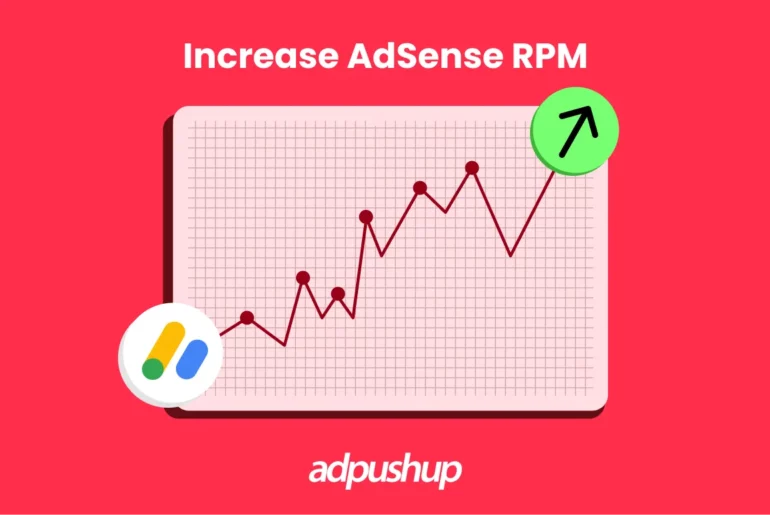

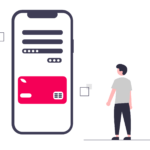
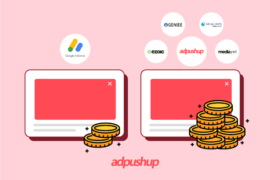




5 Comments
it is very confidential article and very helpful thank you for sharing
amazing information for any adsense publisher. thank u for sharing with us.
Thanks for this insightful posts, am really frustrated with the drop in clicks on my ads, pageviews and ad impression is high but clicks are low
Beautifully written post. Your blog provided me with some valuable information; it was fascinating to read; thank you for sharing this fantastic material with my vision.
Thank you!